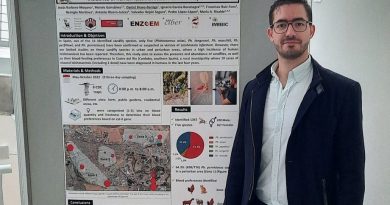Evaluation of two enzyme-linked immunosorbent assays for diagnosis of bluetongue virus in wild ruminants
Comparative Immunology, Microbiology and Infectious Diseases
Abstract
Bluetongue (BT) is a reportable re-emerging vector-borne disease of animal health concern. Enzyme-linked immunosorbent assays (ELISA) are frequently used in BT surveillance programs in domestic ruminants, but their diagnostic accuracy has not been evaluated for wild ruminants, which can play an important role as natural reservoirs of bluetongue virus (BTV). The aim of this study was to assess two commercial ELISAs for BT diagnosis in wild ruminants using control sera of known BTV infection status and field samples. When control sera were tested, the double recognition ELISA (DR-ELISA) showed 100 % sensitivity (Se) and specificity (Sp), while the competitive ELISA (C-ELISA) had 86.4 % Se and 97.1 % Sp. Using field samples, the selected latent-class analysis model showed 95.7 % Se and 85.9 % Sp for DR-ELISA, 58.2 % Se and 95.8 % Sp for C-ELISA and 84.2 % Se for the serum neutralization test (SNT). Our results indicate that the DR-ELISA may be a useful diagnostic method to assess BTV circulation in endemic areas, while the C-ELISA should be selected when free-areas are surveyed. The discrepancy between control and field samples point out that the inclusion of field samples is required to assess the accuracy of commercial ELISAs for the serological diagnosis of BTV in wild ruminants.




